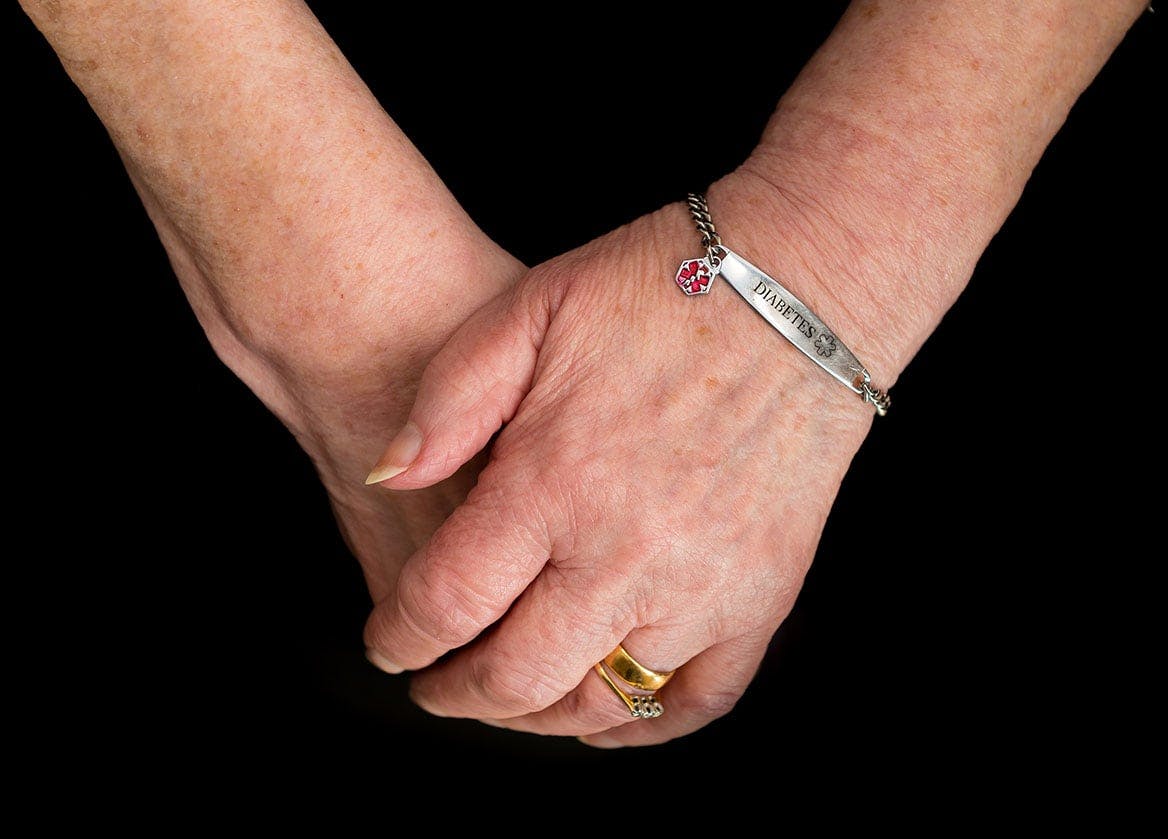The Difference Between Medical Bracelets and Systems

Do you prefer wearing a button or a bracelet? The important distinction between a Life Protect 24/7 Medical Alert System and Medical Information Bracelet.
Can You Tell The Difference?
Can you explain the differences between the following wearable systems?
- Medical Alert System
- Medical I.D. Bracelet
- Emergency Alert Bracelet
- Medical Alert Bracelet
- Medical Information System
Answers will vary depending on who you ask. It’s an example of how confusing the Medical Alert industry as a whole has gotten with their product labels and terminology.
The simplest way to explain it: Identification and information systems carry important medical information about the wearer. Alert or emergency systems (like our Life Protect monitors) call for help in an emergency.

Why They Differ
Medical information devices (like bracelets) give paramedics or doctors critical information about medications, allergies, or other conditions if the wearer is unresponsive or unable to talk. A few common examples of what medical conditions a wearer might include are:
- Food allergies
- Respiratory issues
- Heart Conditions
- Diabetes
- Metal implants
- Contagion risks
Which brings up an important point: bracelets have their benefits in a medical emergency, but their use is limited to how far it can reach. Another issue rests with the fact that some people are using different methods to communicate medical warnings, like tattoos. They’re not standardized the same way medical bracelets are, and sometimes that can cause confusion with doctors and paramedics.
They Don’t Call For Help. We Do.
These passive forms of information will only notify those assisting you, and not actively call for help. Because of this, they work best in conjunction with an emergency alert system such as our Life Protect pendants devices. In fact, a blockchain future of medical documentation may transcend bracelets and tattoos entirely.
“Blockchain technology can facilitate these requirements. The word ‘blockchain’ combines the two key elements of its technology: A ‘block’ is a record of a transaction or an interaction, secured using cryptography (similar to the code-based encryptions common in medical practice). This block might be the sale of cryptocurrency from one person to another at a given price, as with Bitcoin, or it might be the record of a doctor's office visit. The block is linked to all prior transactions or visits, thus forming a ‘chain.’”’
The main takeaway here is that medical alert systems aren't going anywhere in the midst of any future healthcare communication revolution. Everything else may become digitized and uploaded to a cloud, but we realize how important it is having an actual person on the other end of a phone line when you need help. That fact cannot be overstated and won’t be left to machines at Life Protect. If no-frills peace of mind is your goal, Give Us a Call Today at 1-844-203-5617.